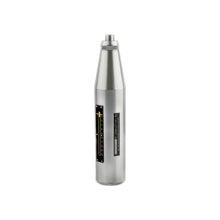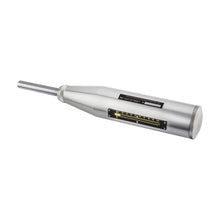Introducing the Concrete Rebound Hammer (Sclerometer) – a reliable and widely used device for testing the strength of concrete and other building materials. The sclerometer was invented by engineer Ernst Schmidt, and it has become the most common method worldwide for measuring concrete strength.
The operating principle of the Concrete Rebound Hammer MSh involves impacting a plunger onto the concrete surface with a predetermined and standardised energy. The height of the striker rebounding is then measured, which is directly proportional to the concrete strength. To determine the strength, calibration charts provided with the instrument are utilised.
The MSh Concrete Rebound Hammer is known for its ease of use, robust design, and high measurement accuracy. It is compliant with industry standards such as ASTM C 805, ASTM D 5873 (for rock), DIN 1048 (p. 2), ENV 206, EN 12 504-2, and ISO / DIS 8045, ensuring reliable and consistent strength testing results.
The device is available in several versions with varying impacting energy levels. The most powerful model is suitable for measuring the strength of concrete with a thickness of 70-100mm or more, as well as testing massive rocks with an impact energy of 2,207J (Nm). This model serves as the base and is the most commonly used worldwide.
The average powerful Rebound Hammer offers an impacting energy of 735J (735 Nm), ideal for measuring the strength of bricks, concrete products with a wall thickness under 100mm, smaller sample sizes, and lower strength stones and rocks.
For testing the mortar of brick masonry, the least powerful Rebound Hammer with an impact energy of 196J (196Nm) is recommended.
It is important to select the appropriate model of the Rebound Hammer based on specific requirements and tasks. All models, regardless of impact energy, are non-destructive testing devices, ensuring the integrity of the tested object.
To verify the accuracy of the Rebound Hammer, a specially calibrated anvil is used. The instrument should display a certain value when testing against the standard anvil, confirming its correct functioning.
| Names / model | Rebound Hammer NOVOTEST MSh-225 | Rebound Hammer NOVOTEST MSh-75 | Rebound Hammer NOVOTEST MSh-20 |
| Measurement range of strength, MPa | 10 – 60 | 10 – 60 | 1 – 25 |
| Impact energy, J | 2207 | 735 | 196 |
| Minimum thickness of testing object, mm | 70 and more | 50 – 100 | 30 and more |
| Measurement accuracy, % | 10 | ||
| Hardness value of impact plunger working surface, HRC, no less | 60 | ||
| Surface roughness of testing object, Ra um, no worse | 40 | ||
| Radius of impact plunger, mm | 25 | ||
| Operating temperature range, ° C | -20 … +50 | ||
| Weight of the device, kg, no more | 1 | ||
| Gross weight of package, kg | 1.9 | ||
| Dimensions of the package, cm | 20*34*10 | ||




